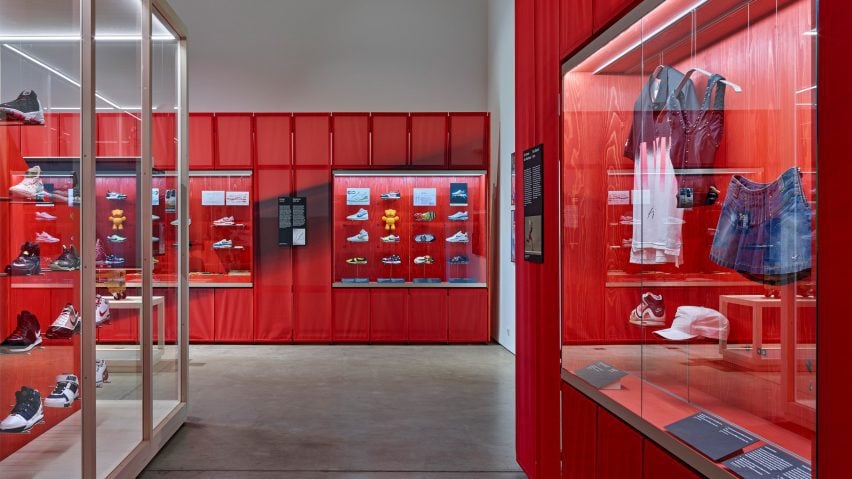
Six milestone Nike projects at the "intersection of style and technology"
The Nike: Form Follows Motion exhibition at Vitra Design Museum showcases the evolution of the sportswear brand. Curator Glenn Adamson picks six projects that reflect defining moments in Nike's history.
On display at the Vitra Design Museum in Weil am Rhein until May 2025, Nike: Form Follows Motion brings together iconic Nike trainers apparel and prototypes from the company's archive.
The exhibition focuses on the evolution of the sportswear brand, which Vitra Design Museum curator-at-large Adamson describes as "the perfect topic for a design exhibition". To create the exhibition the curators had access to over 200,000 items belonging to the company in the Department of Nike Archives (DNA).
"I learned that we would have access to the holdings at DNA and leapt at the opportunity," Adamson told Dezeen.
"Nike is, in many ways, the perfect topic for a design exhibition, an intersection of style and technology, with obvious audience appeal but also a lot of unknown stories."
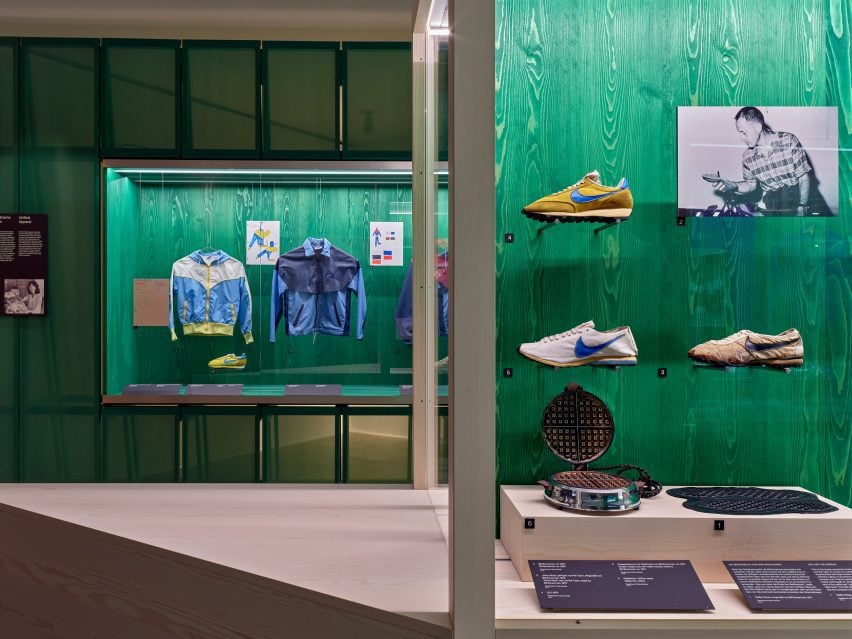
The exhibition aims to highlight Nike's impact on sportswear design and comment on the application of scientific systems within their designs.
"The brand's methodology sees a creative tension between the objective study of the body in motion and intuitive expression. This balance between science and art, performance metrics and emotional connection, is really what defines Nike design," said Adamson.
The curator also noted the brand's ability to stay consistent in its approach to design in both aesthetics and process.
"They have remained obsessed with optimisation and particularly with the idea of efficiency: removing material without losing performance characteristics," he said.
"It's also interesting to note that Nike frequently revisits its own classics, inviting outside designers to reinterpret them," he continued. "One might say that successfully balancing continuity and change is another secret of the company's success; it is how they maintain their strong identity and connection to the audience, while also navigating new technical possibilities and social conditions."
Adamson shares six highlights from the exhibition:
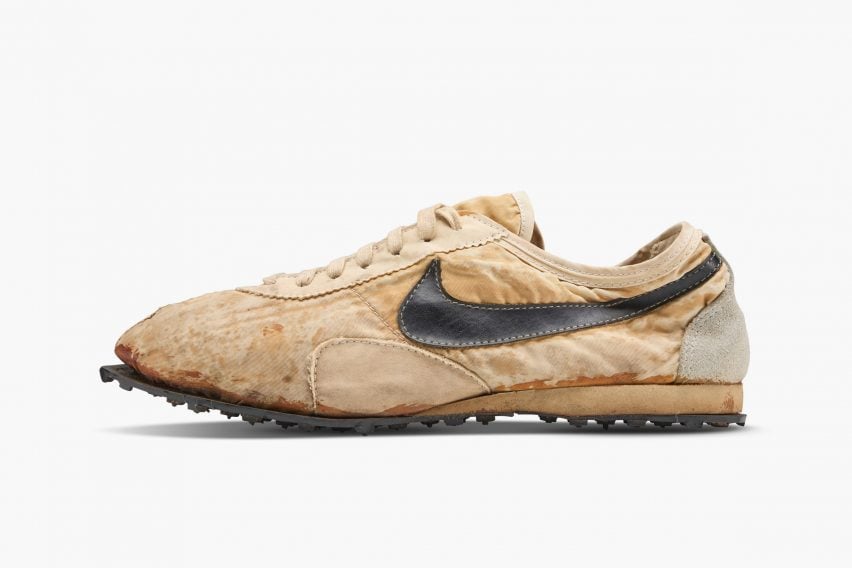
The Moon Shoe, 1972
"Handmade by Nike's co-founder Bill Bowerman, this is a real relic of the company's early days. It features an early version of the waffle sole, which Bowerman invented when on a whim, he used a kitchen waffle iron as a casting mould.
"It produced a sole with good 'grip' on the track and ultimately led to the Waffle trainer, one of Nike's first big commercial successes."
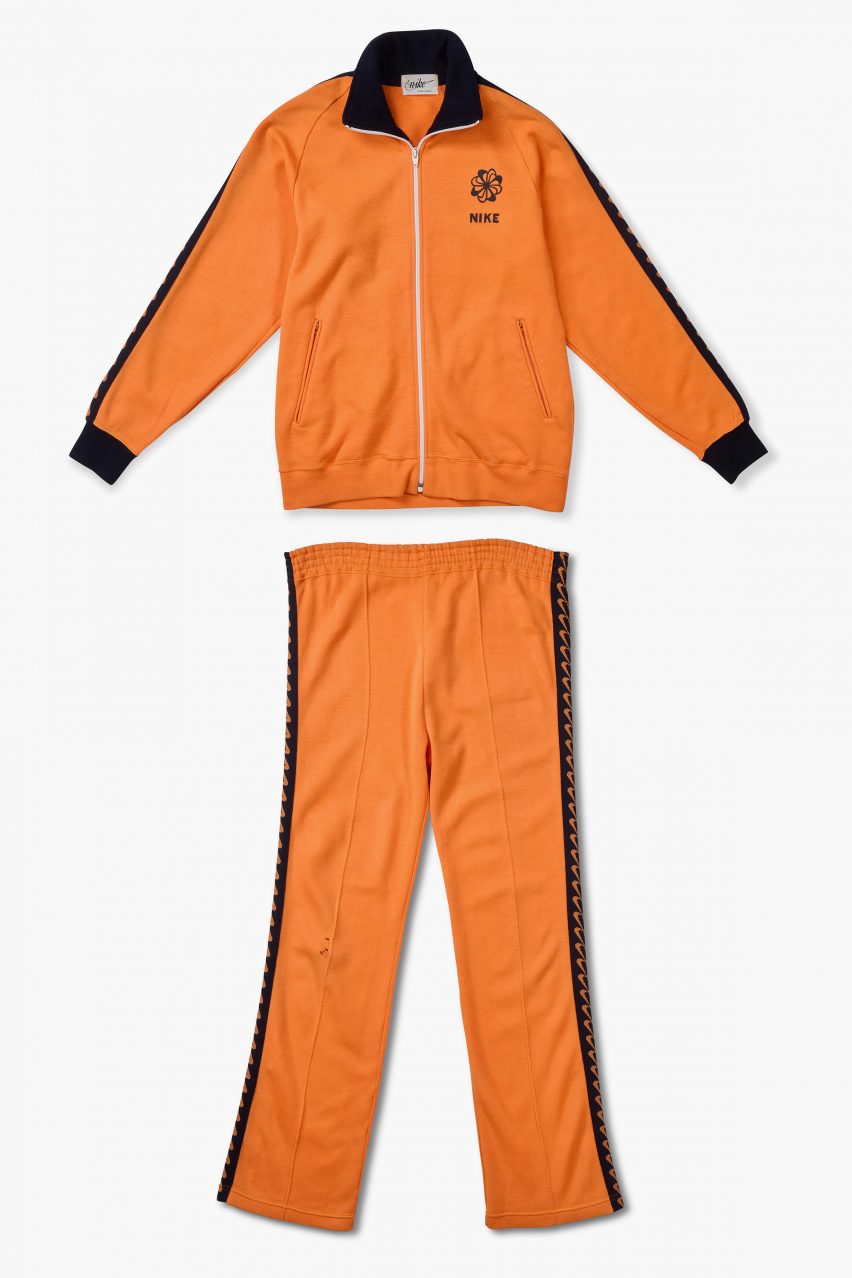
Nike tracksuit with chain link logo, 1976
"When Carolyn Davidson designed the now iconic Swoosh, Nike's CEO and co-founder Phil Knight famously said 'I don't love it, but maybe it will grow on me.'
"In the early years, the company's design culture was quite improvisatory, and its handling of the logo was no exception.
"The Swoosh was used in a pinwheel configuration on some products and also, as here, in a chainlink pattern down the arms and legs of a tracksuit.
"Later on, the usage guidelines got a lot tighter, but even as the Swoosh has become universally recognisable it has been used quite creatively, showing the company's unusually open-minded attitude to design."
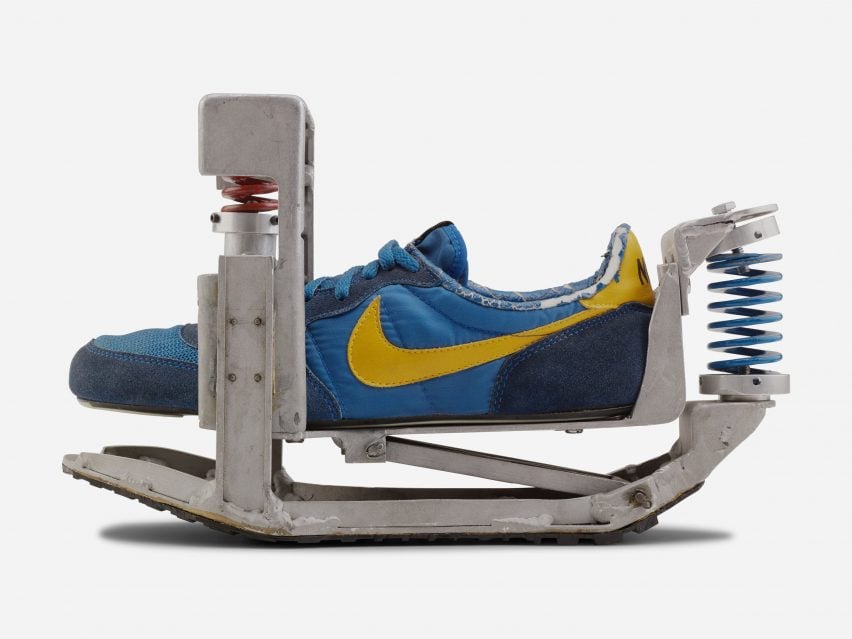
Early mechanical Shox prototype, 1981
"This is my very favourite object in the show – against stiff competition – because it demonstrates just how far out Nike's culture of research and development can go, and also how long that process can take.
"It was used to test the prospect of mechanical shock absorption, adapting an existing system used for a 'sprung' running track.
"That thinking would eventually develop into the popular Shox line, though it would be twenty years before it got to market."

Foamposite production elements, 1997
"One of the holy grails of Nike design is the monolithic shoe, made from just one material, which means no adhesives and much greater recyclability.
"We track the progress of that idea through various projects, including Marc Newson's Zvezdocha – Nike's first glueless shoe.
"The Foamposite, which debuted in 1997, is one of the most exciting in the series. Developed in collaboration with NBA star Penny Hardaway, it features an upper made by introducing heated polyurethane into a mould.
"Fun aside, the colours in our exhibition are all inspired by colours on Nike products: Oregon Ducks green, Chicago Bulls red, the high-tech blue of the Foamposite and Volt Yellow, which was used across all the company's footwear at the London Olympics in 2012, creating the impression of a 'Team Nike.'"
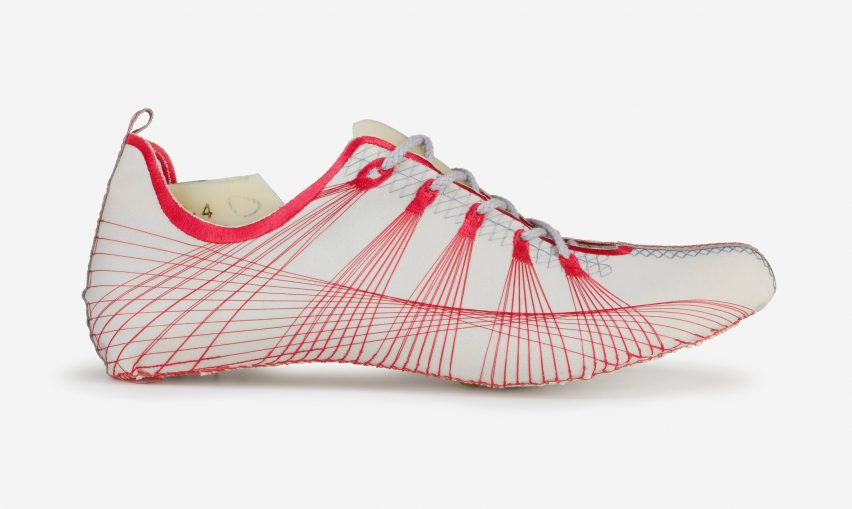
Flywire prototype, c. 2006
"Most of my own curating and writing is about craft, and when I began work on 'Nike: Form Follows Motion' I had no idea how relevant that background would be.
"The most exciting objects in the exhibition, at least to me, are prototypes which show the pathway to technical and aesthetic breakthroughs.
"This is a good example, a test of the new Flywire technology, which essentially amounts to attaching long embroidery threads under tension to the surface of an upper. This added strength just where it was needed, a very efficient design solution.
"It was part of the development toward Flyknit, a 3D-knitting system that allows designers to shape an upper right down to 'pixel level.'"
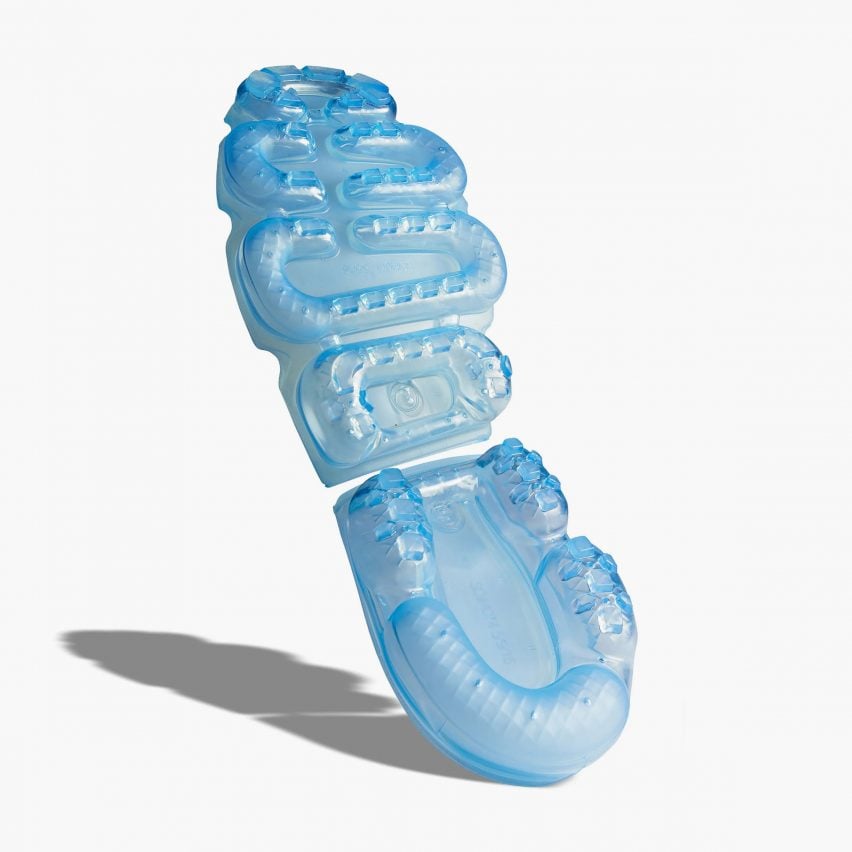
Vapormax Airbag, 2016
"With the 1987 Air Max, Nike introduced the concept of visible air, making its signature technology evident (and hence marketable) to customers.
"This inaugurated a quest to make it as visible as possible, culminating in the Vapormax, launched in 2017.
"It is reportedly the most road tested shoe in Nike history, and you can see why, as the sole is entirely made of pressurised air units in a maze-like configuration, with no enclosing protective foam.
"I use a pair for running myself and can attest that it feels like nothing else, it literally puts a bounce in your step."
The exhibition photography is by Bernhard Strauss.
Nike: Form Follows Motion at the Vitra Design Museum in Weil am Rhein, Germany, runs until 4 May 2025. See Dezeen Events Guide for more architecture and design events around the world.